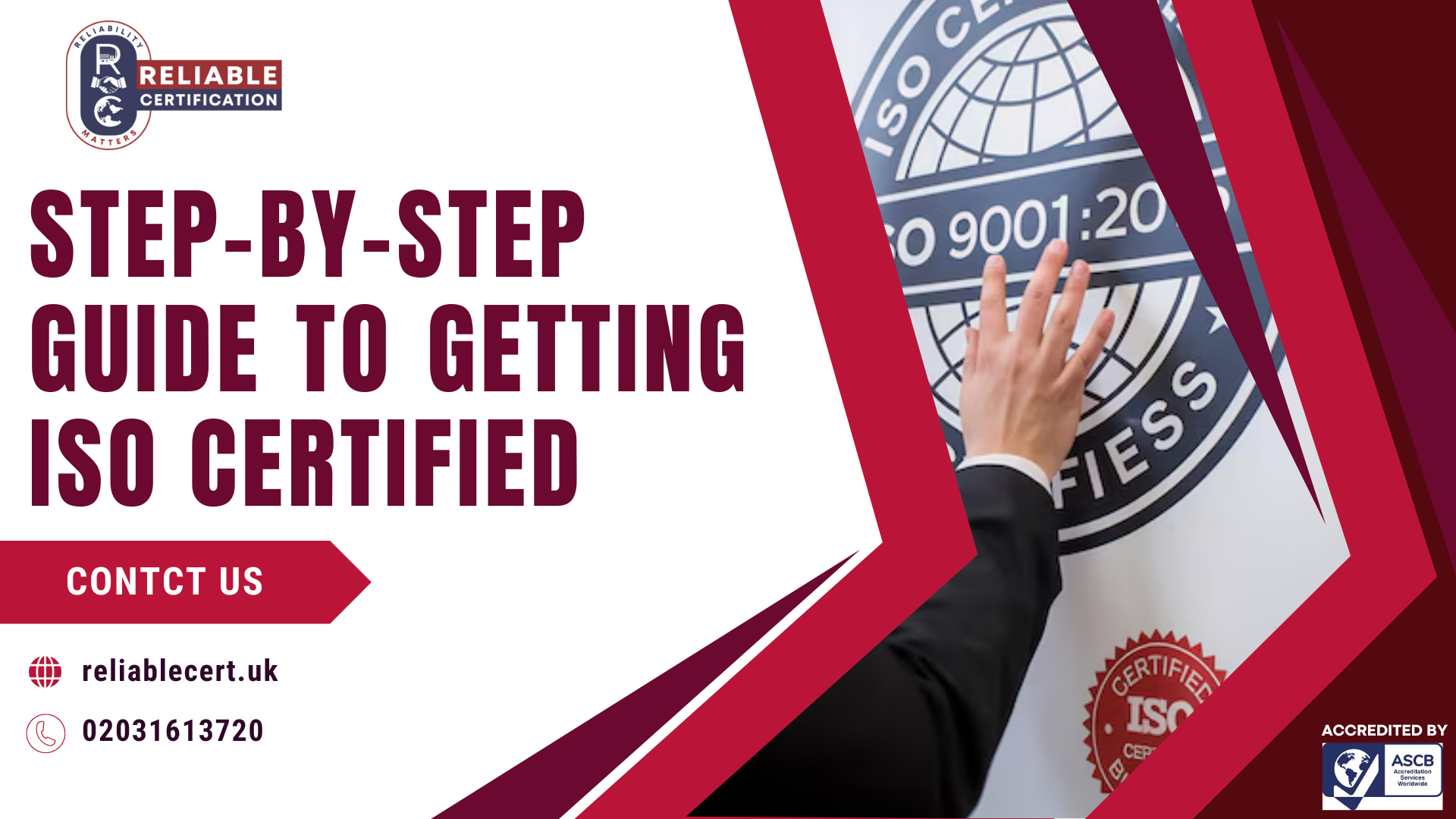See how to get ISO certified with this clear, step-by-step guide. Understand the process, requirements, and benefits for your business success.

Whether you're a small startup or an established enterprise, ISO certification is a powerful way to improve your business operations, gain customer trust, and meet international standards. But many businesses are unsure where to start. That’s why we’ve created this practical and easy-to-follow guide for ISO certification to help you through the entire process, from preparation to certification and beyond.
This step-by-step breakdown will not only simplify your journey but also ensure you're audit-ready with confidence.
Before diving into the steps, let’s understand the basics.
ISO certification is a seal of approval from a recognized body that your company’s management system, processes, or products meet international standards developed by the International Organization for Standardization (ISO).
There are various types of ISO standards depending on the industry. The most common include:
Now, let’s dive into the step-by-step guide for ISO certification.
Your first step is to identify the ISO standard that aligns with your business needs and industry.
Example: If you're in manufacturing and want to enhance product quality, ISO 9001 is ideal. If you're an IT firm dealing with sensitive data, ISO 27001 would be more relevant.
Once you've selected the right standard, study its requirements carefully. This helps you understand what’s expected and plan accordingly.
Understanding the standard is crucial before you begin making internal changes. Many companies skip this and face issues later during the audit phase.
This is where your actual ISO certification journey begins. A gap analysis helps compare your current processes with the standard's requirements.
To identify:
This step gives you a clear roadmap for your implementation.
Now it’s time to build or update your internal management system. This means creating policies, procedures, and documentation that meet ISO standards.
Use the findings from your gap analysis to guide your documentation. This system should reflect how your business actually works, not just what looks good on paper.
Employees play a vital role in the success of your ISO certification. Everyone must understand the changes and their responsibilities.
This ensures buy-in from the entire team and makes implementation smoother.
Start using the new or revised processes across your organization. Ensure they’re followed consistently.
This implementation period also gives you time to fix any practical issues before the actual audit.
An internal audit is your trial run before the real test. It checks whether your system complies with ISO standards and is being followed in daily operations.
You’ll need to document this process thoroughly—it’s a required part of most ISO standards.
Top management should meet to review audit results, objectives, customer feedback, and any non-conformities found.
This step ensures leadership is fully involved and accountable, a core principle of ISO standards like ISO 9001.
Now you’re ready to go for the official audit. You’ll need to choose a certification body—a third-party organization authorized to issue ISO certificates.
Your credibility depends on the credibility of the certification body.
The ISO certification audit typically has two stages:
The auditor reviews your management system documents and checks readiness for Stage 2.
The auditor visits your site to assess whether your system is being implemented effectively.
They’ll:
If everything is in place, the auditor will recommend you for certification.
After passing the audit, you’ll receive your ISO certification, usually valid for three years. During this period, you’ll undergo surveillance audits (typically yearly) to ensure ongoing compliance.
This certificate can now be used in marketing, tenders, and client communications to boost your reputation.
ISO certification is not a one-time effort. You must regularly:
Continual improvement is at the heart of ISO standards and keeps your business efficient and competitive.
Getting ISO certification may seem like a complex journey, but with the right planning and team involvement, it becomes manageable and highly rewarding. This step-by-step guide for ISO certification provides a clear path from decision-making to receiving your certificate and beyond.
Not only does ISO certification strengthen your internal systems, but it also shows customers, partners, and regulators that your business is reliable, professional, and committed to quality.
Need help with your ISO journey?
Reach out to our team of ISO experts for a free quote—we make certification simple, fast, and stress-free
Typically replies within 30 minutes